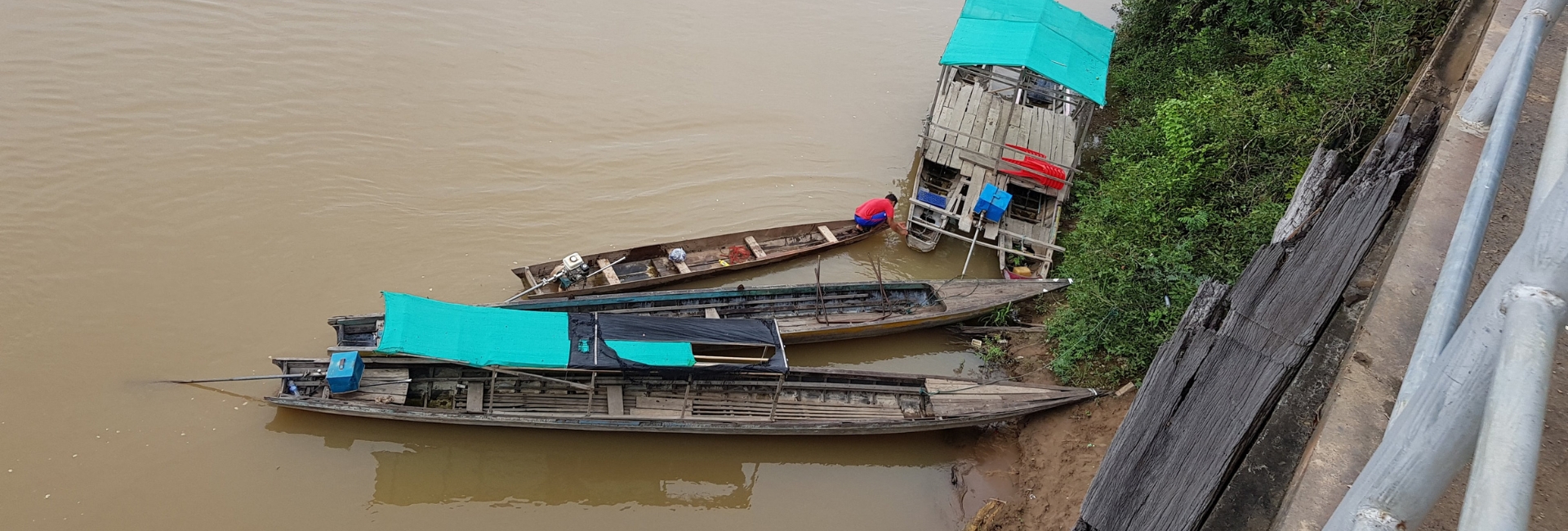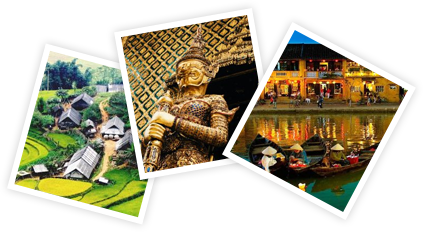This travel blog covers everything you need to know as a traveler, including visa requirements, local customs, transportation options, top attractions, cuisine, and more. Here are all the interesting notes that Indochina Voyages Team gives to amaze everyone’s trip when traveling to Laos.
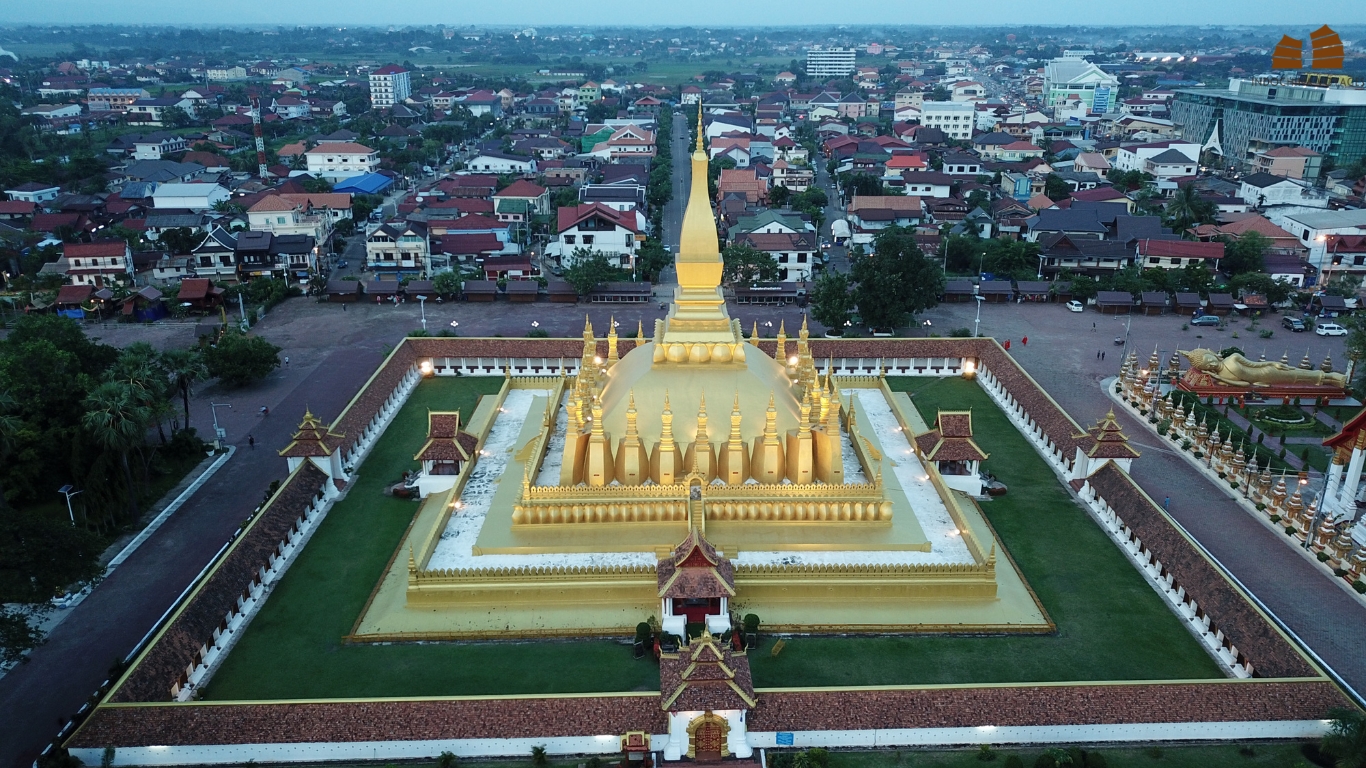
Where is Laos?
Laos, officially known as the Lao People’s Democratic Republic, is a landlocked country located in Southeast Asia. It is bordered by several countries, including China to the north, Vietnam to the east, Cambodia to the southeast, Thailand to the west, and Myanmar (Burma) to the northwest. The capital city of Laos is Vientiane.
With a population of approximately 7 million people, Laos covers an area of around 236,800 square kilometers. Laos does not have formal regional divisions like Vietnam. However, it can be loosely divided into three main geographic areas, each offering unique attractions and experiences for travelers:
- Northern Laos: This region is characterized by mountainous terrain, lush forests, and ethnic minority communities. It is home to the country’s former royal capital, Luang Prabang, which is renowned for its well-preserved Buddhist temples and traditional architecture. The area offers opportunities for trekking, exploring remote villages, and experiencing the natural beauty of Laos.
- Central Laos: The central region is dominated by the mighty Mekong River, which flows through the country. The capital city, Vientiane, is located in this region and serves as the political and administrative center of Laos. Other notable destinations in central Laos include the historic town of Thakhek and the stunning limestone karst landscapes of Khammouane Province.
- Southern Laos: The southern region is known for its scenic riverine landscapes, including the famous 4,000 Islands (Si Phan Don) area on the Mekong River. This tranquil region offers opportunities for relaxation, river cruises, and observing the traditional way of life along the riverbanks. The Bolaven Plateau, with its coffee plantations and waterfalls, is another popular attraction in southern Laos.
Laos Highlights
Laos has a unique and enchanting vibe that captivates travelers. With the slow life and tranquil atmosphere, this country will bring to you the peaceful feeling and a perfect place for family holidays. It is a country of stunning natural landscapes, rich cultural heritage, and warm hospitality. When traveling to Laos, some regions that deserve attention are:
Luang Prabang
Known for its well-preserved French colonial architecture, Luang Prabang is a UNESCO World Heritage site and a must-visit destination in Laos. The town’s blend of traditional Lao and European colonial architecture creates a charming atmosphere.
It is home to beautiful Buddhist temples, such as Wat Xieng Thong and Wat Mai, as well as the famous Kuang Si Waterfalls. Coming to Luang Prabang to admire the daily morning alms-giving ceremony, where monks collect offerings from locals and tourists, is a spiritual experience. Visiting the Royal Palace Museum, exploring the night market, and taking a boat trip on the Mekong River are also popular activities.
Vientiane
Vientiane, the capital city of Laos, offers a mix of cultural attractions and a laid-back atmosphere. The city features beautiful temples, such as Wat Si Saket and Pha That Luang (a golden Buddhist stupa), which are significant religious sites. Patuxai, a war monument resembling the Arc de Triomphe in Paris, offers panoramic views of the city. Don’t miss the vibrant food scene, where you can sample delicious Lao cuisine.
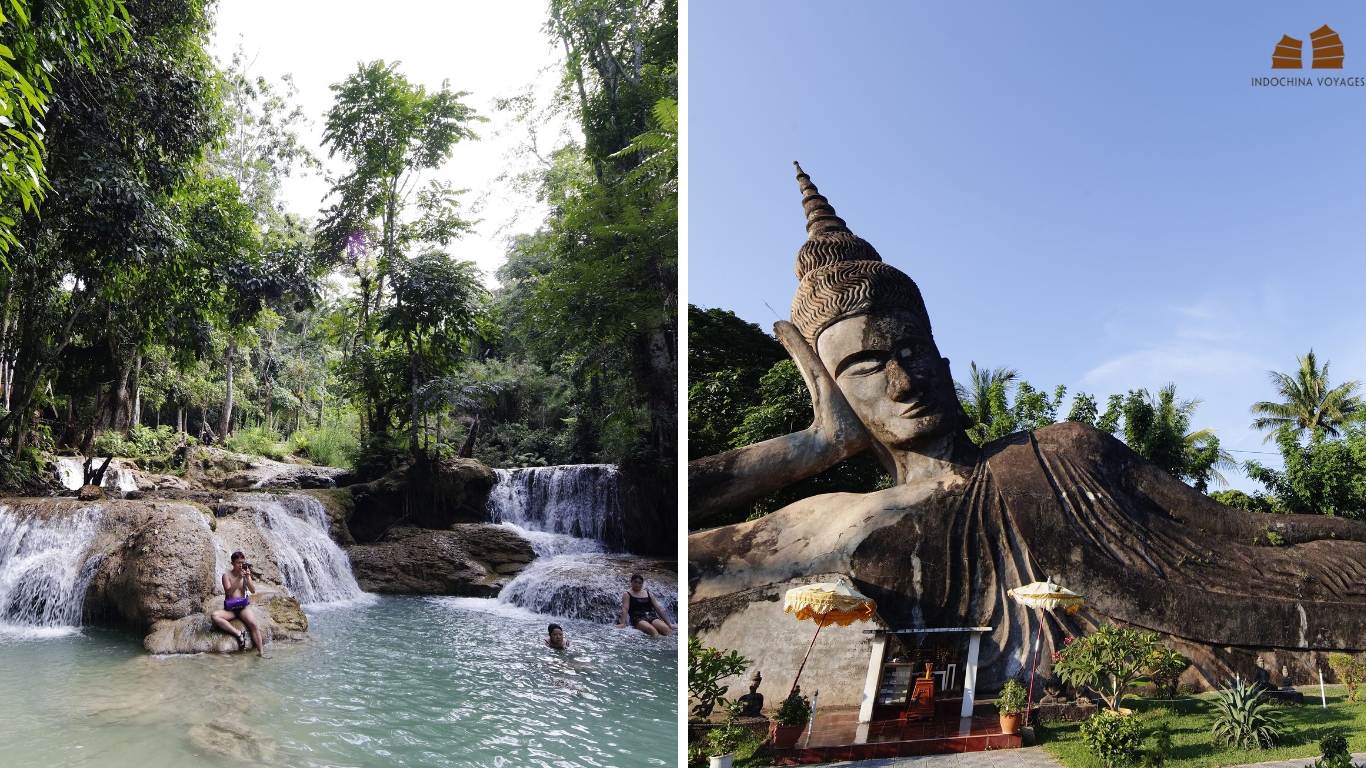
Muang La
Muang La is a hidden gem in northern Laos. It is known for its hot springs, where you can relax and soak in the therapeutic waters. The region is also home to ethnic minority villages, where you can learn about traditional customs and participate in local activities. Trekking through the mountains and visiting Buddhist monasteries are popular pursuits in Muang La.
Pakse
Pakse serves as a starting point for exploring the Bolaven Plateau, famous for its coffee plantations and picturesque waterfalls. Don Khone and Don Det, two islands in the Mekong River, are ideal for cycling, exploring waterfalls, and spotting the endangered Irrawaddy dolphins. The nearby Wat Phou temple complex, a UNESCO World Heritage site, showcases ancient Khmer architecture.
Vang Vieng
Vang Vieng‘s scenic beauty draws adventure enthusiasts. The karst landscapes provide a backdrop for outdoor activities like tubing, kayaking, and rock climbing. Cave exploration, hot air balloon rides, and hiking are also popular. The Blue Lagoon and Tham Chang Cave are must-visit attractions in Vang Vieng. Vang Vieng is a perfect place for those who prefer cave explorations with tranquility.
Huay Xay and Pak Beng
Huay Xay is a small town located in northern Laos, near the border with Thailand. It serves as a popular entry point for travelers embarking on the slow boat journey along the Mekong River to Luang Prabang. Huay Xay offers a laid-back atmosphere, with a few guesthouses, restaurants, and a bustling local market where visitors can explore and sample local cuisine.
Pak Beng is a riverside village situated along the Mekong River, approximately halfway between Huay Xay and Luang Prabang. It serves as an overnight stop for travelers on the slow boat journey. Pak Beng offers basic accommodations and a few restaurants catering to tourists, providing a chance to experience the rustic charm of a traditional Lao village surrounded by beautiful scenery.
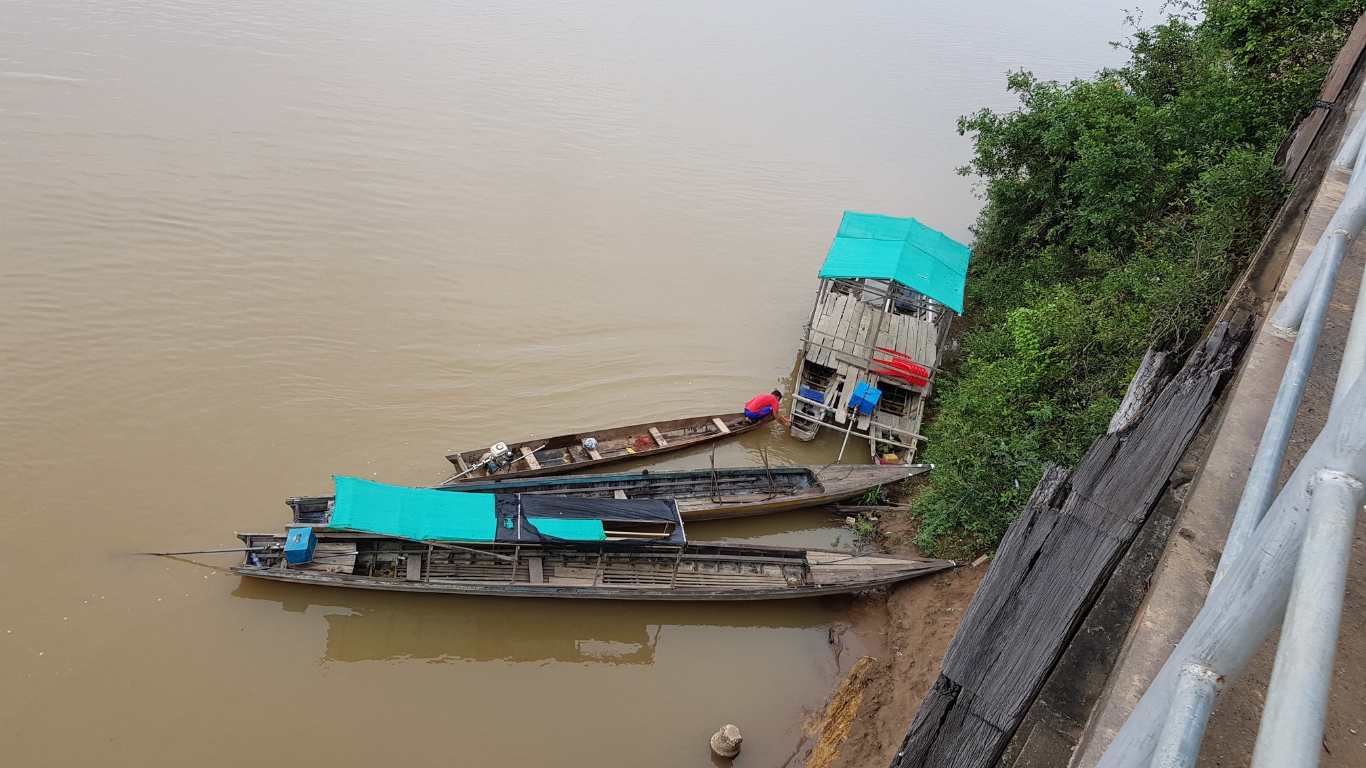
Huay Xay and Pak Beng are often visited by travelers embarking on a slow boat journey along the Mekong River. The boat trip offers a serene and picturesque experience as you cruise through lush landscapes, passing traditional villages and witnessing local river life.
Are you finding off-the-beaten-track places in Laos? This blog may help you: Laos off the beaten track: 3 Destinations to visit before everyone else does
Weather in Laos
Laos experiences a tropical monsoon climate with three main seasons: the hot season, the rainy season, and the cool season. The best time to visit Laos is during the cool and dry season, which typically lasts from November to February. During this time, the weather is pleasant, with cooler temperatures and less rainfall.
In the hot season, which stretches from March to May, temperatures can soar, especially in the lowland areas. The rainy season, from June to October, brings heavy rainfall and occasional flooding, particularly in the northern and central regions of Laos.
It’s important to note that weather patterns can vary across different regions of Laos due to the country’s diverse topography. Higher elevations, such as in Luang Prabang and the Bolaven Plateau, tend to be slightly cooler than lowland areas.
For more details about Laos weather by month, please read our blog: Laos weather by month: When is the best time of year to visit Laos?
Transportation
Flight to Laos
Laos has several international airports that serve as entry points for travelers arriving by air. The main international airports in Laos are:
- Wattay International Airport (Vientiane): Located in the capital city of Vientiane, Wattay International Airport is the primary gateway for international travelers visiting Laos. It receives flights from various destinations in the region, including Bangkok, Hanoi, Ho Chi Minh City, Kuala Lumpur, and Singapore. Airlines such as Lao Airlines, Thai Airways, Vietnam Airlines, AirAsia, and Singapore Airlines operate regular flights to and from Wattay International Airport.
- Luang Prabang International Airport: Situated in the UNESCO World Heritage city of Luang Prabang, this airport receives international flights from destinations such as Bangkok, Chiang Mai, Hanoi, and Siem Reap. Airlines like Lao Airlines, Bangkok Airways, Vietnam Airlines, and AirAsia offer international connections to Luang Prabang.
- Pakse International Airport: Located in the southern city of Pakse, this airport serves as an entry point for travelers visiting the Bolaven Plateau and the southern region of Laos. International flights from Bangkok, Ho Chi Minh City, and Siem Reap are available through airlines like Lao Airlines, Bangkok Airways, and Vietnam Airlines.
These airports facilitate international travel to Laos and provide connections to various destinations in the region. It’s important to check with airlines and travel agencies for the most up-to-date flight schedules and availability, as they may be subject to change.
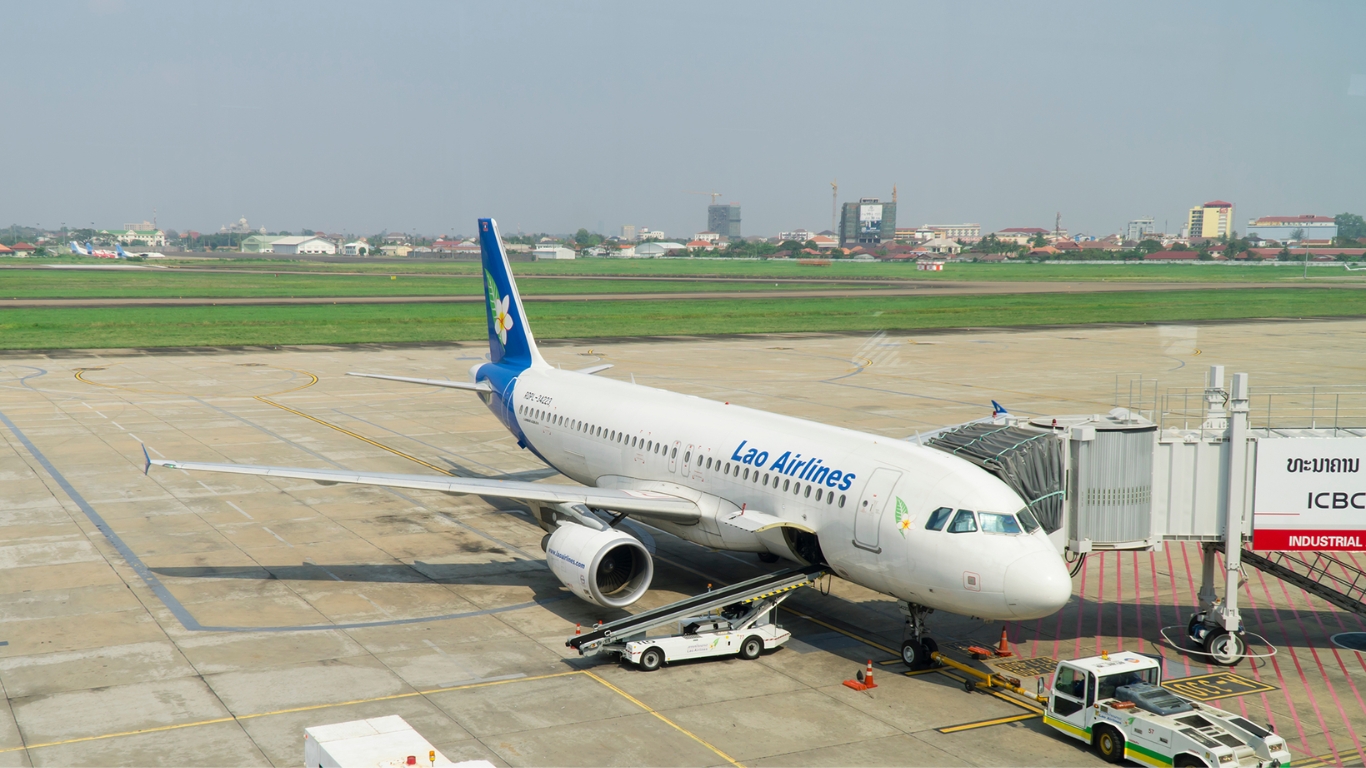
Domestic Flights
As you are wondering if spending time in Laos and want to transfer between destinations in the region, is it available? Domestic flights are available in Laos, although the number of domestic routes is more limited compared to neighboring countries like Thailand or Vietnam. The main domestic airline in Laos is Lao Airlines, which operates flights to several destinations within the country.
Some of the popular domestic flight routes in Laos include:
- Vientiane to Luang Prabang: This route connects the capital city of Vientiane with the UNESCO World Heritage city of Luang Prabang. It is a convenient option for travelers looking to save time and avoid the long journey by road.
- Vientiane to Pakse: This route connects Vientiane with the southern city of Pakse, which serves as a gateway to the Bolaven Plateau and the 4,000 Islands (Si Phan Don) area. It is a convenient option for travelers wanting to explore southern Laos.
- Luang Prabang to Pakse: This route allows travelers to fly directly between two popular destinations in Laos, bypassing the need for a long journey by road or boat.
- Luang Prabang to Xieng Khouang (Phonsavan): This route connects Luang Prabang with the town of Phonsavan in Xieng Khouang Province, known for its mysterious Plain of Jars. It is a convenient option for those interested in exploring the ancient archaeological sites in the area.
These are some examples of domestic flight routes in Laos, but it’s important to note that the frequency and availability of flights may vary. It’s advisable to check with Lao Airlines or other local airlines for the most up-to-date information on domestic flight routes and schedules.
Common Transportations for Getting Around
Within Laos, transportation options include buses, trains, boats, and private vehicles. Buses are the most common mode of transportation for traveling between cities and towns. They offer both local and long-distance services, with varying levels of comfort and affordability.
Trains are limited in Laos, with a single line connecting the capital Vientiane to the Thai border. However, plans for expanding the railway network are underway.
Boat travel is popular for exploring the Mekong River and its tributaries. Slow boat trips are a unique way to experience the scenic beauty of Laos, especially between Huay Xay and Luang Prabang or Luang Prabang and Vientiane.
For shorter distances within cities or towns, tuk-tuks and taxis are readily available. In some places, bicycles and motorbikes can be rented for independent exploration.
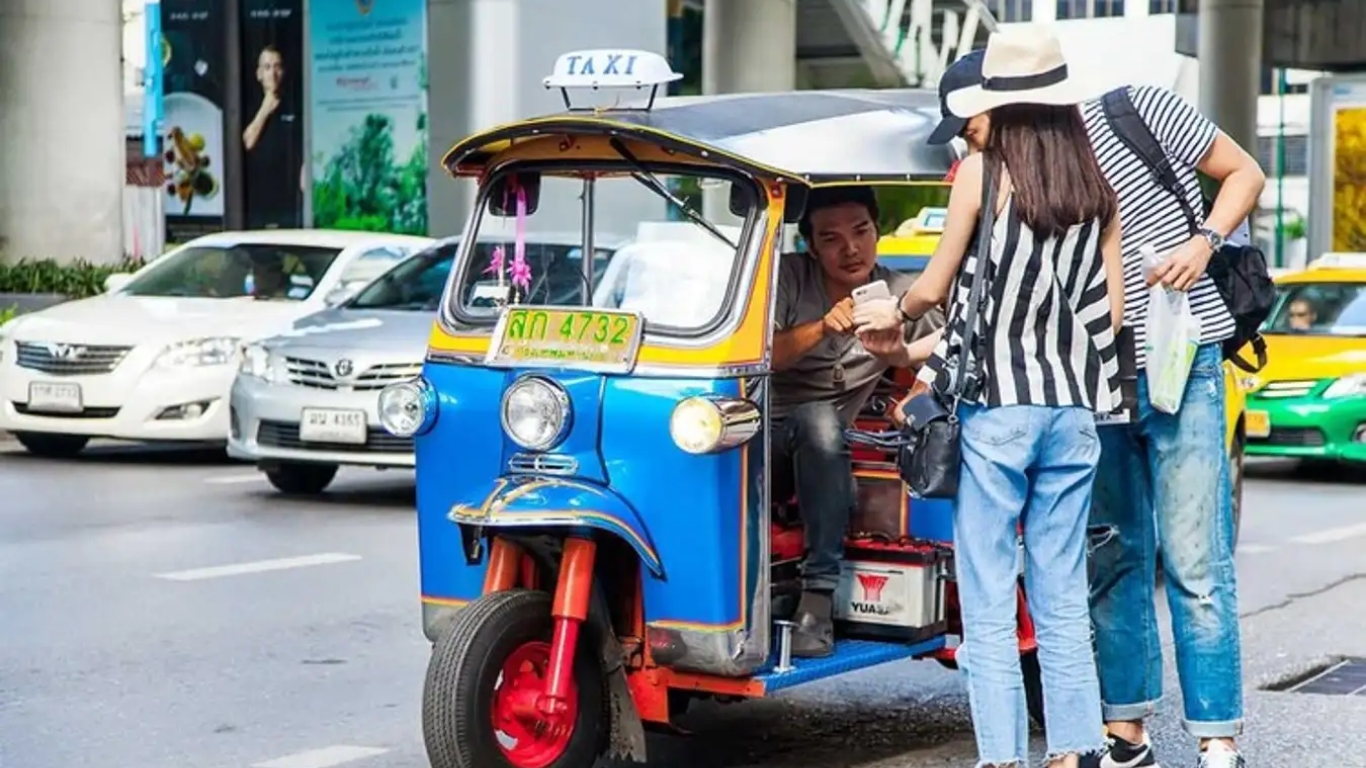
Culture and Tradition
Laos is a country rich in culture and tradition, offering travelers a unique and immersive experience. Here are some aspects of Laos’ culture and traditions that visitors can explore:
Buddhism
Buddhism plays a significant role in Lao culture, and temples are an integral part of the country’s landscape. Travelers can visit temples and witness the daily rituals and practices of Buddhism. The most famous temple in Laos is the Wat Xieng Thong in Luang Prabang, known for its exquisite architecture and intricate designs.
Almsgiving
Participating in the daily morning almsgiving ceremony is a culturally significant experience in Laos. Visitors can observe or even take part in offering food to Buddhist monks, who walk quietly through the streets collecting their daily sustenance. Luang Prabang is particularly renowned for its serene almsgiving processions.
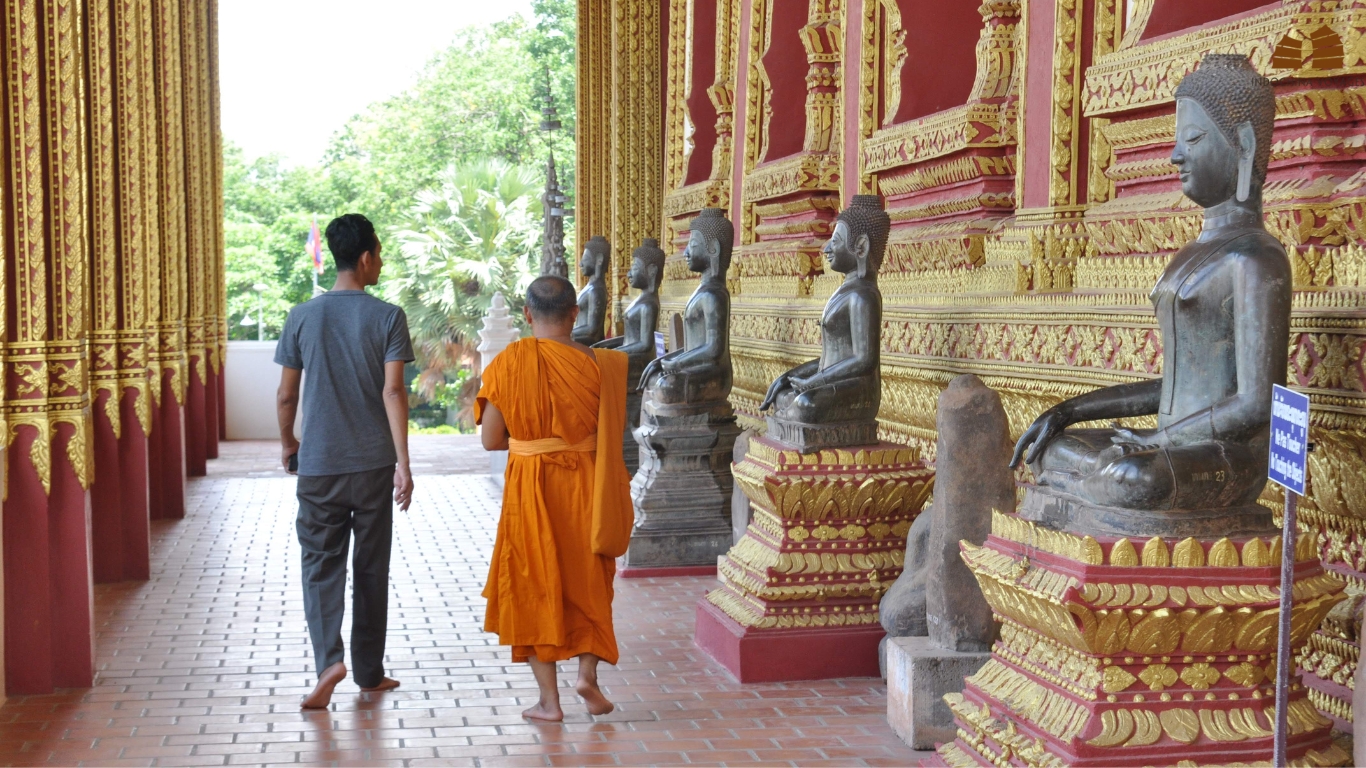
Traditional Arts and Crafts
Laos is known for its traditional arts and crafts, including weaving, pottery, silverwork, and wood carving. Travelers can visit local artisans and workshops to witness the creation of intricate textiles, intricate pottery patterns, and beautiful handicrafts. The Talat Sao Morning Market in Vientiane is a great place to explore and purchase traditional Lao handicrafts.
Festivals
Laos is home to vibrant and colorful festivals that showcase the country’s cultural heritage. One of the most famous festivals is Boun Pi Mai, the Lao New Year, celebrated in April. During this time, locals engage in water festivities, temple visits, and traditional ceremonies. Other notable festivals include the Boat Racing Festival and the Rocket Festival.
Traditional Music and Dance
Traditional Lao music and dance are captivating forms of art that reflect the country’s cultural identity. The “Lam” style of folk music and the graceful “Ram Wong” dance are popular expressions of Lao performing arts. Visitors can enjoy traditional music and dance performances at cultural centers and during festivals.
Ethnic Minority Villages
Laos is home to a diverse range of ethnic minority groups, each with its own distinct traditions and customs. Travelers can visit ethnic minority villages to learn about their unique way of life, traditional crafts, and cultural practices. The northern provinces, such as Luang Namtha and Phongsaly, offer opportunities for trekking and homestays in these villages.
Let’s read this for more Laos Tradition Facts: 5 interesting facts about Laos traditions
Food & Cuisine – World’s Top Food Destination
As known as a World’s top food destination, Laos is a hidden gem for food enthusiasts, offering a unique culinary experience. With its unique flavors, fresh ingredients, and diverse influences, Laos offers a culinary experience that is sure to delight food enthusiasts. Like the neighbors Thailand or Vietnam, street food in Laos is a delight that you can’t be missed out in this country Here are some must-try dishes when visiting Laos:
- Laap: A minced meat salad mixed with herbs, spices, and lime juice. It comes in various forms, such as chicken, beef, or fish laap.
- Tam Mak Hoong: Also known as green papaya salad, this dish combines shredded unripe papaya with chili, garlic, lime juice, and fish sauce. It has a spicy and tangy flavor.
- Or Lam: A traditional Lao stew made with a variety of vegetables, meat, and fragrant herbs. It is often cooked with buffalo meat and served with sticky rice.
- Khao Poon: A popular Lao noodle soup made with fermented rice noodles, coconut milk, and flavored with herbs and spices. It is usually served with a variety of toppings, such as chicken, fish, or tofu.
- Mok Pa: Steamed fish wrapped in banana leaves with a mixture of herbs, spices, and vegetables. It is a flavorful and healthy dish.
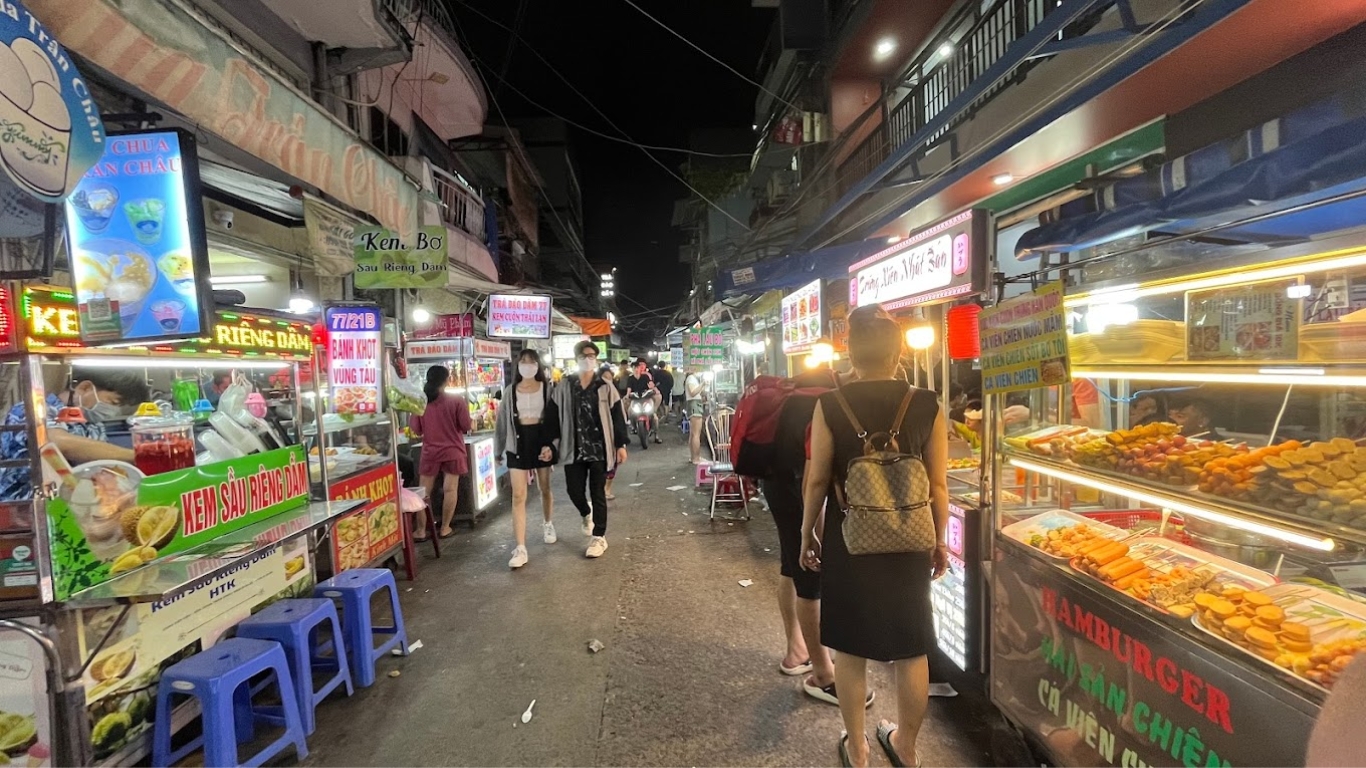
Lao cuisine also incorporates elements from neighboring countries, such as Thailand and Vietnam. Vegetarian and vegan options are available in many restaurants, particularly in tourist areas.
More and more dishes for your reference about Laos Street Food: Top 10+ Must-Try Street Food Laos You Can Not Missed
Laos Travel Advice
Visa
Before traveling to Laos, it’s important to check visa requirements based on your nationality. Most people in many countries around the world need a visa to enter Laos, except if you come from:
- Brunei (for 14 days)
- Cambodia (for 30 days)
- Indonesia (for 30 days)
- Japan (for 15 days)
- Luxembourg (for 15 days)
- Malaysia (for 30 days)
- Mongolia (for 30 days)
- Myanmar (for 14 days)
- Philippines (for 30 days)
- Russia (for 30 days)
- Singapore (for 30 days)
- South Korea (for 30 days)
- Switzerland (for 15 days)
- Thailand (for 30 days)
- Vietnam (for 30 days)
Laos is part of the ASEAN agreement, which allows visa-free travel between Southeast Asian countries. Citizens of these countries listed above can typically stay in Laos for up to 14-15 days without a visa. However, if they wish to extend their stay beyond this period, they will need to apply for a Laos visa online or upon arrival. It is important to note that visa regulations may vary, and it is advisable to check with the relevant authorities or embassies for the most up-to-date information on visa requirements and extensions when planning a trip to Laos.
Internet & Calling
Internet and communication services in Laos have been steadily improving in recent years, although coverage and connectivity can vary depending on the location. Here’s an overview of internet access, mobile networks, and SIM cards in Laos:
Internet Access and Mobile Network
Wi-Fi is available in major cities, including Vientiane, Luang Prabang, and Pakse. Many hotels, guesthouses, cafes, and restaurants offer free Wi-Fi to their customers. However, the internet speed and reliability may not be as consistent in rural or remote areas.
Laos has 3G and 4G networks available, with 4G LTE being the newest and fastest internet signal in the country. The major mobile network operators in Laos are:
- Lao Telecom (LaoTel)
- Unitel
- Beeline (ETL)
- Star Telecom (Laotel)
SIM Cards
Travelers visiting Laos can easily purchase a local SIM card to access mobile data and make calls. The most common and convenient SIM cards for tourists are available from the major network operators mentioned above (Lao Telecom, Unitel, Beeline, Star Telecom). These SIM cards are widely available at airports, mobile network stores, convenience stores, and street vendors.
You can buy a Laos SIM card upon arrival at international airports or from authorized sellers in cities and towns. The prices for the SIM cards vary depending on the network operator and the package you choose.
SMS and Contacting within Laos
To contact local numbers within Laos, you generally won’t need an additional country code or SMS prefix. Simply dial the local phone number when making calls or sending text messages within the country. However, if you plan to make international calls or send SMS messages to foreign numbers, you will need to include the appropriate country code and prefix.
Electric Notice
In Laos, the standard voltage is 230V and the common plug types are Type A, B, and C. To prepare for your trip, check your device’s voltage compatibility and bring the necessary plug adapters. Consider bringing power backups for areas with potential power outages like rural areas (such as Phongsaly, Luang Namtha, and Huaphan). Learn basic phrases or use translation apps for communication. Exercise caution when using electrical outlets. For specific concerns, consult with your accommodation or local authorities.
Currency and Payment
The official currency of Laos is the Lao kip (LAK). Cash is widely used for day-to-day transactions, especially in smaller towns and rural areas. It’s recommended to carry some cash in small denominations for convenience.
Credit cards are accepted in larger hotels, restaurants, and upscale establishments in major cities. However, it’s advisable to carry cash for smaller establishments and marketplaces where credit card acceptance may be limited.
ATMs are available in major cities and towns such as Luang Prabang, Vientiane, Pakse, etc. Which allows you to withdraw cash using your international debit or credit card. However, it’s advisable to inform your bank about your travel plans to avoid any issues with card usage.
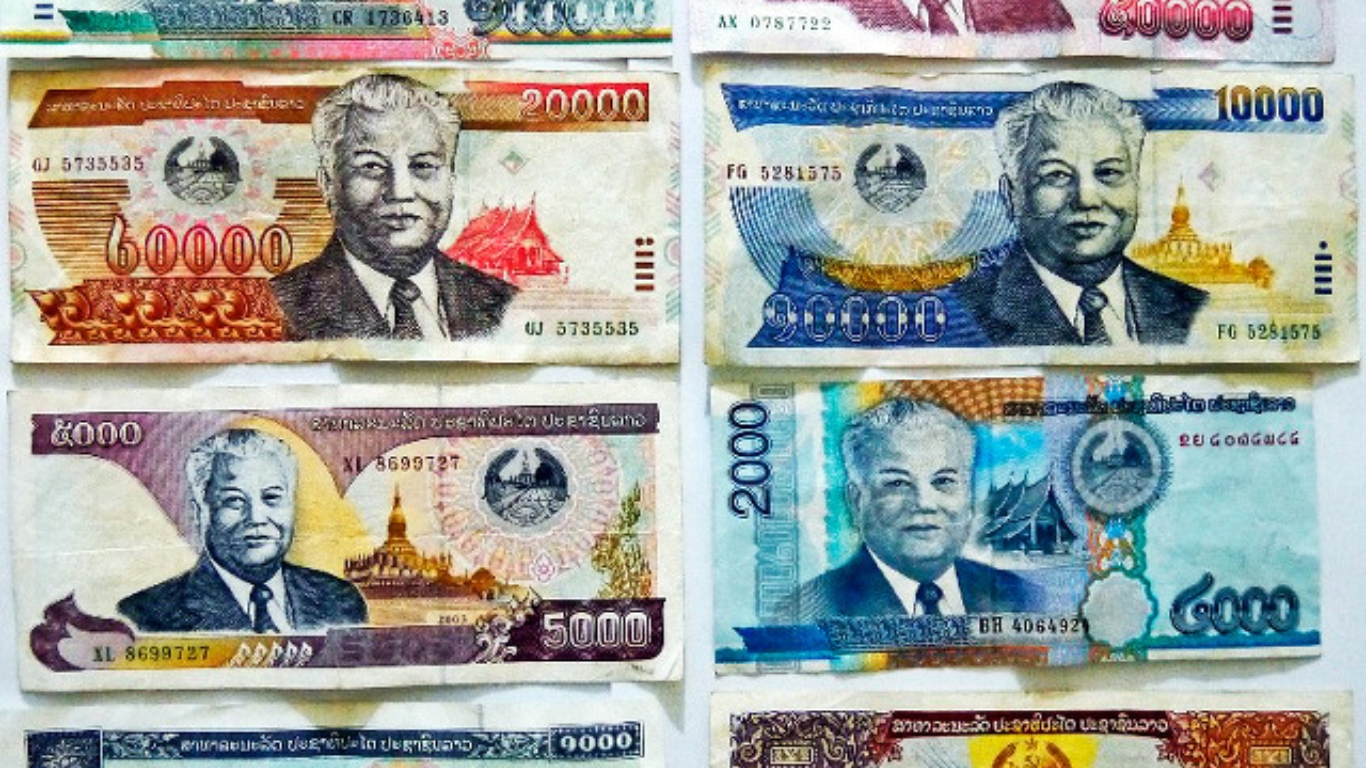
What do I need to bring before coming?
When traveling to Laos, it’s important to pack appropriate clothing and essentials. Here are some items to consider:
- Lightweight and breathable clothing suitable for the tropical climate
- Comfortable walking shoes or sandals for exploring
- Sunscreen, hat, and sunglasses for sun protection
- Insect repellent to guard against mosquitoes and other insects
- Travel adapter for charging electronic devices
- Basic first aid kit with necessary medications and supplies
- Travel insurance to cover any unforeseen circumstances
How much does a Laos Trip cost?
The cost of a trip to Laos can vary depending on various factors such as the duration of stay, accommodation choices, transportation options, dining preferences, and activities undertaken. It’s important to note that the following estimates are based on general averages and can fluctuate depending on personal preferences and travel styles.
Accommodation: Budget guesthouses and hostels in Laos can range from $10 to $30 per night, while mid-range hotels and resorts may cost between $30 and $100 per night. Luxury accommodations can exceed $100 per night.
Transportation: Local transportation within cities and towns is relatively affordable, with tuk-tuks and shared mini-vans costing a few dollars for short distances. Longer intercity bus rides can range from $5 to $20 depending on the distance. Private transportation options like taxis or rental cars will be more expensive.
Food: Street food and local restaurants in Laos offer affordable dining options, with meals ranging from $2 to $10 per person. Western-style or upscale dining experiences can cost between $10 and $30 per meal.
Activities and Sightseeing: Entrance fees for popular tourist attractions in Laos can range from $1 to $10, depending on the site. Adventure activities like trekking, kayaking, or zip-lining may cost anywhere from $20 to $100 or more, depending on the duration and level of difficulty.
Overall, as a rough estimate, a budget traveler may spend around $30 to $50 per day in Laos, while mid-range travelers can expect to spend between $50 and $100 per day. Luxury travelers should budget for $100 or more per day.
It’s important to allocate additional funds for unexpected expenses, souvenirs, and travel insurance. Prices can also vary depending on the specific locations and exchange rates at the time of travel. It’s advisable to research and plan your trip budget accordingly based on your individual preferences and interests.
Indochina Voyages has various available Laos Tours for your reference:
Or else, you can definitely customize your own trip with us to Laos until it suits you the best:
From Indochina Voyages Specialists

